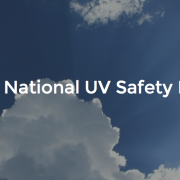5 Minutes Could Save You an Eye Infection OR MORE!
There is a certain car insurance company that tells you that “five minutes could save you 15% or more on your car insurance!” Well, the team here at Envision Eyecare wants you to spend five minutes doing something that could not only save you money but also time, pain, and potential vision loss.
Have you ever thought that to save a little money, you’d wear your one month contact lens for two months? Three months? Have you ever been so tired at night that you decide sleeping in your contacts is easier than taking them out? What about sleeping in them for a month? Have you ever stored your contacts in something other than fresh, sterile contact lens solution?
Good idea! If you want your eyes to look like this, that is:
Read on to find out what easy steps you can take to prevent this from happening to you.
Giant Papillary Conjunctivitis
The picture above shows a condition known as Giant Papillary Conjunctivitis or GPC. GPC causes the inner surface of the eyelid to become irritated and inflamed. Large, painful bumps appear on the underside of the eyelid. GPC is most commonly related to wearing contact lenses. It occurs both in patients who use soft contacts as well as rigid gas permeable lenses (hard contacts), but it occurs much more frequently in soft contact lens wearers. The condition can appear even after wearing contacts successfully for many years with no problems, and only rarely occurs in people who are not contact lens wearers (someone who wears an artificial eye or who has exposed sutures in their eye are also at risk).
http://www.canovision.com/info/papilary.htm
Corneal Ulcers
A painful condition of the eye known as a corneal ulcer can be caused by bacterial infections, trauma to the eye, AND by misuse of contact lenses. It requires many painful (and expensive)  doctor visits for treatment, sometimes surgery, and can still leave you with partial vision loss, not to mention that you probably won’t be able to wear contact lenses again. A patient wearing contact lenses and taking them out every day has (on average) a 1 in 10,000 chance of developing a corneal ulcer. Sleeping in contact lenses increases the risk to 1 in 1,000. But you say “I sleep in my contact lenses all the time and haven’t ever had a problem!” When patients say this, we at Envision Eyecare say “and once you have had an infection, corneal abrasion or corneal ulcer once, you’ll never sleep in them (or maybe even wear them) again”. Take into account the time, pain, and expense that the woman described below must have experienced in her treatment for a corneal ulcer (her eye is the one pictured to the right).
doctor visits for treatment, sometimes surgery, and can still leave you with partial vision loss, not to mention that you probably won’t be able to wear contact lenses again. A patient wearing contact lenses and taking them out every day has (on average) a 1 in 10,000 chance of developing a corneal ulcer. Sleeping in contact lenses increases the risk to 1 in 1,000. But you say “I sleep in my contact lenses all the time and haven’t ever had a problem!” When patients say this, we at Envision Eyecare say “and once you have had an infection, corneal abrasion or corneal ulcer once, you’ll never sleep in them (or maybe even wear them) again”. Take into account the time, pain, and expense that the woman described below must have experienced in her treatment for a corneal ulcer (her eye is the one pictured to the right).
“This 30 year-old woman was a contact lens wearer. She developed a painful left eye a week ago and was treated at the polyclinic. Despite taking the [prescribed] eye drop religiously, the pain and the vision worsened. Corneal scrap was performed for culture and the patient was admitted for intensive topical gentamicin and cefuroxime. She responded well and was discharged after five days. The culture grew Pseudomonas aeurginosa. This organism is the most common cause of bacterial ulcer amongst contact lens users.”
picture and text taken from http://www.sarawakeyecare.com/Atlasofophthalmology/anteriorsegment/Anteriorsegment29pseudomonascornealulcer.htm
Bacterial Infections
Many of these painful conditions attributed to contact lens wear are caused by a bacterial infection. Imagine, if you will, a scratch on your hand becomes slightly infected. Instead of going to the doctor for treatment and keeping the scratch clean, you continue to wrap a piece of plastic wrap around it. Day after day you put this plastic on it and each night you keep the plastic in a bowl of dirty, slimy water. Sometimes you leave the plastic on for days at a time, allowing no oxygen in and keeping bacteria warm, moist, happy, and fed. Imagine what the scratch would look like after a few days. This situation (while a little extreme) is similar to what happens to your eye when you continue to put a damaged, dirty contact lens on your eye. Bacterial infections occur, scratches happen from lenses that have been worn too long or do not fit properly, and quite suddenly, you have a major problem on your hands (or your eyes rather…).
Why Does My Prescription Only Last 12 Months?
The U.S. Government requires that a prescription for contact lenses expire after 12 months. This is to insure that your eyes are still healthy enough to wear contact lenses, and moreover, to be sure that the lens and prescription that you are wearing is still working for your eyes. Contact lenses that do not fit properly or that are worn for too long can cause more than just discomfort or blurry vision. There are times when a contact lens wearer has no irritation or vision loss, yet has complications (of which he/she is unaware) that can cause have lifelong consequences. By design, your contact lenses will begin to disintegrate and degrade after the specified wear period. Over time, the worn edges can cause tiny painful scratches on your cornea known as corneal abrasions. This injury is yet another that requires extensive treatment from your optometrist or ophthalmologist who will want to see you multiple times until your eye has healed. In the same way that your doctor writes an expiration date on your medication, the 12 month prescription is written to prevent complications in contact lens wear.
How Do I Prevent These Nasty, Painful Problems?
Glad you asked! Wearing contact lenses takes a certain amount of responsibility on the part of the patient. Because they are so convenient and common, we sometimes forget that we are dealing with a medical device that could potentially cause harm to our eyes. Fortunately, taking care of your contact lenses is easy!! The bottom line is that a few minutes on the front end can save you much time, pain, and medical cost on the back end. Here’s what to do.
- Clean your lenses properly every time you take them out (see below for a refresher)
- Replace your lenses in a timely fashion (that means replace them when your doctor has advised you to do so)
- Do NOT sleep in your lenses (unless otherwise advised by your doctor)
- Use only fresh, sterile solution for cleaning and storing your lenses
- Have a yearly eye health exam and contact lens fit EVERY YEAR to be sure that your eyes are still healthy enough to wear contact lenses without complications, and to check for prescription changes
- Do not wear your contact lenses when you’re sick or when your eyes feel irritated
- If you experience discomfort or irritation, remove your contact lenses immediately and call your optometrist
- Try and give your eyes 18-20 hours of awake contact-free time during the week. Your eyes need open eye oxygen exposure for healthy function. (putting them in an hour or so later in the morning and taking them out an hour or so earlier in the evening is a great way to do this)
On Cleaning Your Lenses
At Envision Eyecare, every new contact lens wearer is given training on inserting and removing contact lenses AND on how to properly clean their lenses at night. If you use a hydrogen peroxide solution to clean your lenses, carefully follow the instructions for rinsing and storing your lenses in the specially designed case for a minimum of six hours. If you use a traditional solution (Opti-Free, Renu, etc.), you should be doing the following:
- WASH YOUR HANDS
- Take the contact lens out of your eye and place in the palm of your hand
- Put a few drops of solution on the surface of each side of the lens and rub gently for 20 seconds
- Holding the lens gently between your fingers, rinse both sides of the lens well with fresh solution
- Fill your clean case with fresh solution (leftover solution is already contaminated with bacteria)
- Store lenses in closed case for the minimum required time for your particular solution
- When putting lenses back in, take lens out of the case with clean hands, rinse with solution, and insert
- DO NOT store lenses in anything other than sterile solution in a clean case (saline does not disinfect your lenses)
- Rinse out your case with solution after each use (water can carry bacteria), and REPLACE case every three months (cases build up a biofilm of bacteria over time that can infect your lens)
15% or More!
Over-wearing your contacts, not cleaning them properly, or sleeping in them when you shouldn’t can be the cause of many eye problems from bacterial infections to vision loss. Five minutes spent paying attention to the prescribed contact lens regimen from your doctor at the appointment, five minutes spent cleaning your lenses properly before you put them in the case for the night, and five minutes reading this blog reminding you of why it is so important to replace your lenses on time and clean your lenses properly will be your first line of defense against developing painful eye infections, irritations, or problems that could not only require extensive and potentially expensive treatment, but that could also prevent you from ever wearing your contact lenses again.
To me, that sounds like an even better deal than saving 15% on my car insurance!
Oh. One last thing. Don’t even think about putting your contact lenses in your mouth. With the amount of bacteria in there, that should go without saying…
There was a recent (and very interesting) NPR spot on the importance of cleaning contact lenses properly (including what some people in a recent study were found to be storing their lenses in (beer, fruit juice, butter)…) You can listen to the story or read the transcript by clicking the link below.
http://www.npr.org/2012/01/09/144885344/why-contact-lens-hygiene-is-important-to-eye-safety




